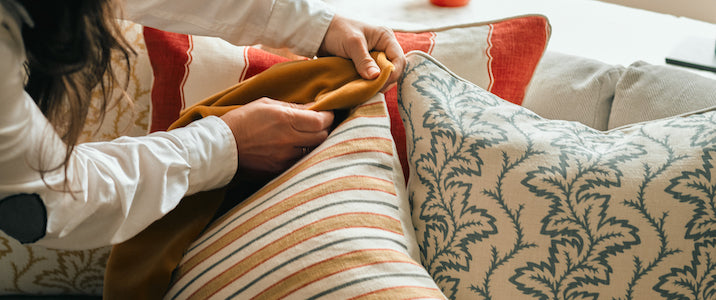The short answer? It depends on the size and style of your headboard! But don’t worry—we’ve gathered expert insights from the bed and headboard-making industry to help guide you through the process.
Determining Fabric Requirements
Every headboard style and size requires a different amount of fabric. If you're purchasing through a bed manufacturer, they often provide specific fabric requirements for each model. However, if you're recovering your headboard yourself, estimating the right amount takes a bit of guesswork. Here’s how you can get a rough idea:
-
Measure your headboard – Note the height, width, and depth. These dimensions will help determine the fabric coverage needed.
-
Consider fabric width – Standard fabric width is around 130 cm. A Single or Double bed headboard will generally fit within this width, but larger headboards (King or Super King) may require additional fabric to join pieces together or incorporate contrasting panels.
-
Account for extra fabric if needed – Some design elements require more fabric, such as:
-
Patterned fabric (directional or repeating patterns) – Extra material is necessary to align patterns correctly.
-
Pillowstops – If your design includes a pillowstop, additional fabric will be required.
-
Contrast piping – If you want a different color for piping, plan for extra fabric.
-
Buttoned headboards – Deep buttoning consumes more fabric due to the tufting effect.
Understanding Pattern Repeats & Directional Fabrics

What is a Pattern Repeat?
When fabric is printed, it has a repeating design along the length of the roll. The vertical pattern repeat refers to the distance between where the pattern starts, ends, and repeats again. If your fabric has a pattern repeat of 4 cm and requires an extra repeat, you’ll need an additional 4 cm of fabric. For larger repeats, such as 68 cm, the extra requirement increases accordingly.
For bed upholstery, you may need up to five pattern repeats, meaning fabrics with large repeats can be expensive and wasteful choices.
What is a Directional Pattern?
A directional pattern has a clear top and bottom. For example, a tree print should always have trees standing upright. If the fabric were turned sideways to avoid seams, the trees would appear sideways—definitely not ideal!
Non-directional patterns, such as polka dots, don’t have a clear top or bottom, so the fabric can be run sideways (railroaded) to minimize seams. Stripes require special attention, as they can be used vertically or horizontally, so you’ll need to confirm your preference before cutting.

Top Tip: Avoid striped or check patterns on deep-buttoned headboards, as the tufting distorts the pattern.
If you have any questions, feel free to reach out—we’re happy to help!





